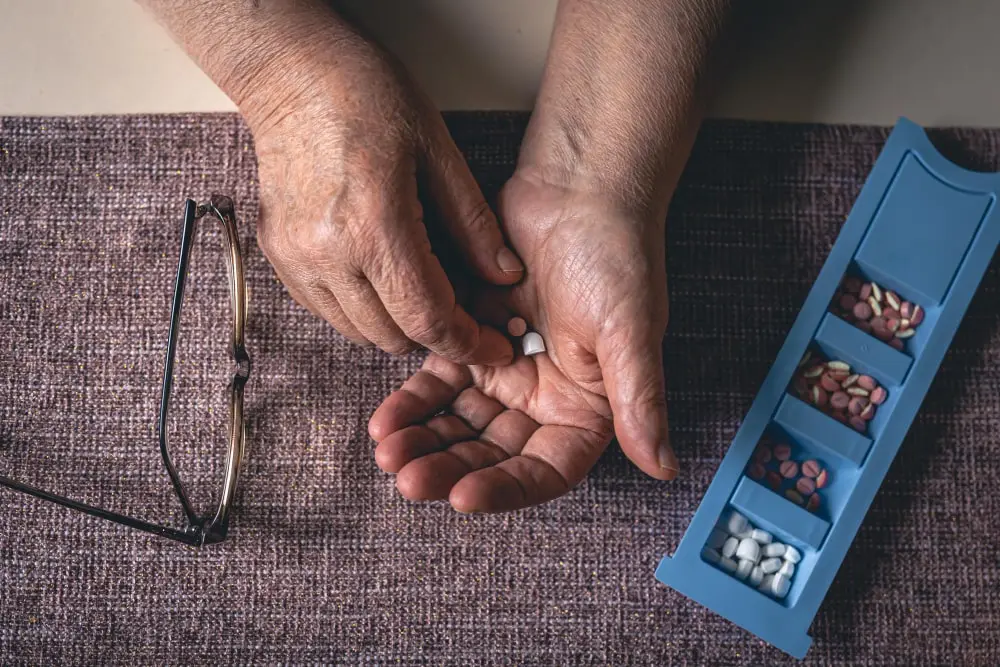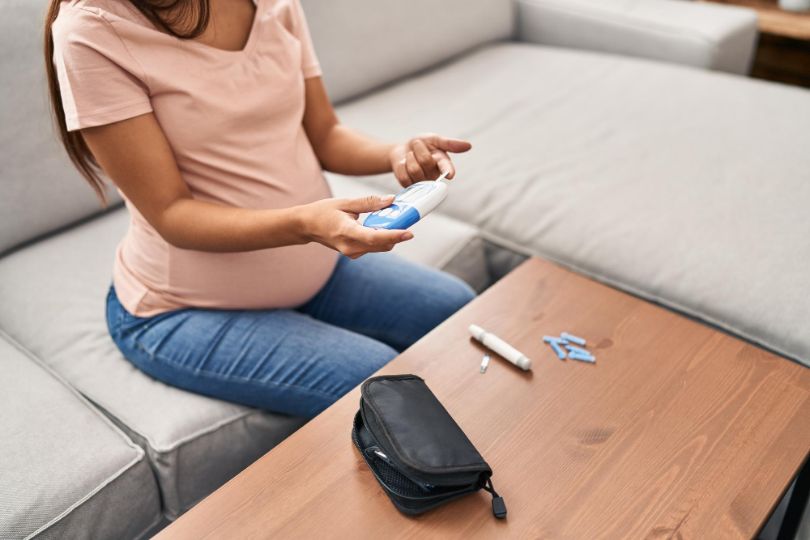Stopping a blood thinner like Eliquis may seem simple—but it can carry serious health risks. If you take Eliquis for atrial fibrillation or blood clot prevention, you might be considering stopping due to side effects, cost concerns, or an upcoming medical procedure. This guide explains what happens when Eliquis leaves your system, outlines the risks of discontinuation, and offers practical tips to protect your health and manage costs.
Eliquis (Apixaban)
See highlights of prescribing information before buying Eliquis from Canada.
Why You Take Eliquis in the First Place
Eliquis belongs to a class of medications called direct oral anticoagulants (DOACs), designed to prevent dangerous blood clots. Your doctor prescribed it for one of these key reasons:
- Non-valvular Atrial Fibrillation (AFib): This irregular heart rhythm affects millions of Americans and significantly increases stroke risk. With atrial fibrillation projected to affect 12.1 million U.S. adults, consistent anticoagulation therapy like Eliquis becomes essential for stroke prevention.
- Deep Vein Thrombosis (DVT) Prevention: DVT occurs when blood clots form in deep veins, typically in the legs. These clots can break loose and travel to the lungs, causing life-threatening pulmonary embolisms.
- Pulmonary Embolism (PE) Treatment and Prevention: PE happens when blood clots block arteries in the lungs. Eliquis helps prevent new clots from forming and reduces the risk of recurrent events.
The stakes are high—VTE recurrence is highest in the first 6-12 months post-event, making consistent anticoagulation therapy critical during this vulnerable period.
How Eliquis Works & How Long It Stays in Your System
Mechanism of Action
Eliquis works by inhibiting Factor Xa, a crucial protein in the blood clotting cascade. By blocking this factor, Eliquis prevents the formation of thrombin, which is essential for creating blood clots. This mechanism provides effective anticoagulation while allowing your body to maintain normal hemostasis for minor injuries.
Also Read: What Is Eliquis Used For?
Pharmacokinetics: Onset, Half-Life & Clearance
Understanding how Eliquis moves through your body helps explain what happens when you stop:
Onset
Eliquis begins working within hours of your first dose, reaching peak blood levels in 3-4 hours.
Half-Life
The medication has a half-life of approximately 12 hours, meaning your body eliminates half of the drug every 12 hours.
Full Clearance
Eliquis is essentially cleared from your system within 3 days after your last dose, though your clotting function begins returning to baseline much sooner. This relatively short half-life means that missing even a few doses can leave you vulnerable to clot formation.
The Dangers of Stopping Eliquis Prematurely
FDA Boxed Warning Overview
The FDA requires Eliquis to carry a black box warning that is the strongest possible. This warning highlights the increased risk of thrombotic events when the medication is discontinued prematurely. It exists because stopping anticoagulation abruptly can lead to rebound clotting, potentially causing strokes, heart attacks, or pulmonary embolisms.
Clinical Evidence from ARISTOTLE & Other Trials
The ARISTOTLE trial, which led to Eliquis’s approval, provided significant evidence about discontinuation risks. One study reported that a number of strokes occurred in patients who had discontinued Eliquis early, highlighting the importance of closely following treatment plans as advised by healthcare providers. This data underscores that stopping anticoagulation isn’t just risky, it can be immediately life-threatening.
Additional studies show that about one-third of DOAC patients stop therapy within 2 years , often due to side effects, costs, or misunderstanding the importance of continued treatment. This adherence challenge contributes to preventable strokes and clotting events.
Timeline of Clotting Risk After Your Last Dose
Understanding the timeline helps illustrate why stopping Eliquis requires careful medical supervision:
Hours 0-12
Eliquis levels begin declining, but significant anticoagulant effect remains.
Hours 12-24
Drug levels drop to 50% of peak concentration; clotting function starts returning toward normal.
Hours 24-48
Clotting returns to near-baseline levels, meaning your pre-treatment stroke and clotting risks are essentially restored.
Days 3-5
Eliquis is fully cleared from your system, with no residual anticoagulant protection. This rapid return to baseline clotting risk explains why patients can experience strokes or clotting events within days of stopping therapy.
Proper Steps to Stopping Eliquis Safely
Consult Your Doctor First
Never stop Eliquis on your own, even if you’re experiencing side effects or cost concerns. Your healthcare provider needs to evaluate your individual clotting risk, consider alternative treatments, and potentially arrange bridging therapy if discontinuation is necessary.
Also Read: What Are Some Medication Questions to Ask Your Doctor?
Planned Discontinuation for Surgery & Dental Work
Medical procedures often require temporary Eliquis discontinuation to reduce bleeding risk:
Minor Procedures
Your doctor may have you stop Eliquis 24-48 hours before the procedure, resuming it 6-8 hours afterward if bleeding risk is low.
Major Surgery
Discontinuation typically occurs 48-72 hours before surgery, with careful coordination between your surgeon, anesthesiologist, and prescribing physician.
Dental Work
Most routine dental procedures can be performed while continuing Eliquis, though your dentist and prescribing doctor should communicate about your specific situation.
Bridging Therapy Options
For high-risk patients who must stop Eliquis, doctors may prescribe bridging therapy using:
Heparin
Administered intravenously in hospital settings, providing short-term anticoagulation that can be quickly reversed if needed.
Low-Molecular-Weight Heparin (LMWH)
Injectable medications like enoxaparin that provide anticoagulation with more predictable effects than traditional heparin.
Other DOACs
In some cases, switching to a different anticoagulant rather than stopping entirely may be appropriate.
Common Misconceptions When Stopping Eliquis
No “Withdrawal” Symptoms—Only Rebound Risk
Unlike some medications, Eliquis doesn’t cause traditional withdrawal symptoms when stopped. You won’t experience headaches, nausea, or other physical discomfort from discontinuation. However, the lack of withdrawal symptoms doesn’t mean stopping is safe—the real danger is the immediate return of your underlying clotting risk.
Food & Drug Interactions Myths (e.g., Leafy Greens)
Many patients worry about food interactions with Eliquis, often confusing it with warfarin. Unlike warfarin, Eliquis has no Vitamin K interactions, so you can safely eat leafy greens, and other foods without affecting your medication. The main dietary consideration is limiting heavy alcohol consumption, which can increase bleeding risk when combined with any anticoagulant.
Also Read: Eliquis and Food Interactions
Managing Side Effects vs. Risks of Discontinuation
Common Eliquis side effects include easy bruising, minor bleeding, and occasionally more serious bleeding events. While these side effects are concerning, they must be weighed against the life-threatening risks of stopping therapy.
Also Read:
If you’re experiencing troublesome side effects, discuss these options with your doctor:
Dose Adjustment: FDA guidelines allow for reduced apixaban dosing in certain cases. Some studies have explored lower doses for clot prevention, but decisions should be made with a healthcare provider.
Alternative Anticoagulants: Some people may respond differently to DOACs like rivaroxaban or dabigatran, depending on individual factors.
Lifestyle Modifications: Simple changes like using softer toothbrushes or avoiding contact sports can reduce bleeding risk while continuing therapy.
Financial Considerations & Cost-Saving Tips
Patient Assistance Programs & Coupons
High medication costs are a common reason patients consider stopping Eliquis. Fortunately, several programs can help:
- Manufacturer Programs: Bristol Myers Squibb offers patient assistance programs that can reduce costs significantly for eligible patients.
- GoodRx and Discount Cards: These services can provide savings of 20-80% at participating pharmacies.
- Nonprofit Organizations: Groups like the Patient Advocate Foundation offer grants and assistance for prescription medications.
- Insurance Appeals: If Eliquis isn’t initially covered, your doctor may be able to submit a prior authorization request or appeal. Approval outcomes vary depending on the insurer and individual circumstances.
Ordering Safely from Licensed Canadian Pharmacies
Licensed Canadian pharmacies can offer savings of up to 70% on Eliquis. To order safely:
- Verify Licensing: Ensure the pharmacy is licensed by the Canadian International Pharmacy Association (CIPA).
- Require Prescriptions: Legitimate pharmacies always require valid prescriptions.
- Check Security: Look for secure payment processing and encrypted websites.
- Consult Your Doctor: Inform your healthcare provider about your medication source to ensure proper monitoring.
Also Read: How to Safely Buy Eliquis from Canadian Pharmacies
Generic & Alternative Anticoagulants
Generic apixaban is available in the U.S., and patients may now access it at potentially lower cost than the brand-name Eliquis
- Warfarin: Though requiring more monitoring, warfarin is significantly less expensive and equally effective for many patients.
- Other DOACs: Depending on your insurance coverage, alternative DOACs might be more affordable.
- Clinical Trials: Some patients may qualify for clinical trials providing free medication and monitoring.
FAQs about Eliquis Withdrawal
What are the side effects of getting off Eliquis?
Stopping Eliquis doesn’t cause traditional withdrawal symptoms. The major risk is an immediate rebound to your pre-treatment clotting risk, which can lead to stroke, DVT, or PE due to lack of anticoagulation.
How long does it take to get Eliquis out of your system?
Eliquis has a half-life of approximately 12 hours. Clotting returns to near normal within 24-48 hours, and the drug is essentially cleared by 3 days after the last dose.
What happens when Eliquis is discontinued?
Premature discontinuation removes anticoagulant protection, increasing the risk of thrombotic events. If stopping for a reason other than bleeding or end of therapy, physicians often bridge with another anticoagulant.
Can you eat bananas with Eliquis?
Yes, unlike warfarin, Eliquis has no Vitamin K interactions, so you can eat bananas, leafy greens and other foods freely. Just limit heavy alcohol consumption to reduce bleeding risk.
Can I stop Eliquis for a few days?
No, never stop Eliquis without medical supervision. Even a few missed doses can leave you vulnerable to life-threatening clots.
Are there natural alternatives to Eliquis?
No natural supplements provide the same anticoagulant protection as Eliquis. While some foods and supplements may have mild blood-thinning effects, they cannot replace prescription anticoagulants.
What should I do if I can’t afford Eliquis?
If cost is a concern, consider asking your healthcare provider about assistance programs or alternative options. It’s important not to make changes to your medication plan without professional guidance.
Conclusion and next actions steps before stopping Eliquis
Stopping Eliquis carries serious risks that far outweigh most side effects or cost concerns. The medication’s 12-hour half-life means your clotting risk returns to dangerous levels within 24–48 hours of your last dose, potentially leading to strokes, heart attacks, or pulmonary embolisms.
Key takeaways include:
- Never stop Eliquis without medical supervision, even if you’re experiencing side effects or cost difficulties. Your doctor can help find solutions that maintain your safety.
- Understand the timeline: Your clotting risk returns to baseline within 1–2 days of stopping, making this a medical emergency requiring immediate attention.
- Explore cost-saving options: Patient assistance programs, Canadian pharmacies, and alternative medications can make anticoagulation therapy more affordable.
- Communicate with your healthcare team: Open discussion about side effects, costs, and concerns helps ensure you receive optimal care while maintaining anticoagulant protection.
If you’re struggling with the high cost of your medication, consider reputable online sources like DoctorSolve.com—a trusted Canadian pharmacy service that helps Americans safely access affordable medications. You can buy Eliquis from Canada at a lower price while still prioritizing your safety, quality, and continuity of care.
Remember, the risks of stopping Eliquis are immediate and potentially life-threatening. The ARISTOTLE trial’s finding of 21 strokes among just 18 patients who stopped therapy prematurely illustrates why this medication requires lifelong commitment for most patients. Work with your healthcare provider to address any concerns while maintaining the anticoagulant protection that could save your life.
References
- FDA.gov. (2025). Highlights of Prescribing Information
- pmc.ncbi.nlm.nih.gov. (2011). Stroke Prevention in Nonvalvular Atrial Fibrillation
- CDC.gov. (2024). About Atrial Fibrillation
- pmc.ncbi.nlm.nih.gov. (2023). Deep Vein Thrombosis
- CDC.gov. (2025). About Venous Thromboembolism
- pmc.ncbi.nlm.nih.gov. (2017). Recurrent Venous Thromboembolism: What Is the Risk and How to Prevent It
- pmc.ncbi.nlm.nih.gov. (2018). Comparison of Drug Switching and Discontinuation Rates in Patients with Nonvalvular Atrial Fibrillation Treated with Direct Oral Anticoagulants in the United States
- pmc.ncbi.nlm.nih.gov. (2017). Management of dental patients receiving antiplatelet therapy or chronic oral anticoagulation: A review of the latest evidence
- pmc.ncbi.nlm.nih.gov. (2017). Perioperative Anticoagulation Management
- MedicalNewsToday.com. (2025). Side effects and how to manage them
- dailymed.nlm.nih.gov. (2022). Prescribing Information
- niaaa.nih.gov. (2014). Harmful Interactions: mixing alcohol with medicines
- MedicalNewsToday.com (2020). Comparison of dabigatran, rivaroxaban, and apixaban for effectiveness and safety in atrial fibrillation: a nationwide cohort study
- CDC.gov. (2023). Characteristics of Adults Aged 18–64 Who Did Not Take Medication as Prescribed to Reduce Costs: United States, 2021
- BMSPAF.org. Bristol Myers Squibb (BMS) Patient Assistance Foundation
- PatientAdvocate.org. Patient Advocate Foundation
- pubmed.ncbi.nlm.nih.gov. (2018). Medicare part D prescribing for direct oral anticoagulants in the United States: Cost, use and the “rubber effect”
- ClinicalTrials.gov. (2022). Expanded Access for Apixaban
- pmc.ncbi.nlm.nih.gov. (2019). Review of herbal medications with the potential to cause bleeding: dental implications, and risk prediction and prevention avenues







